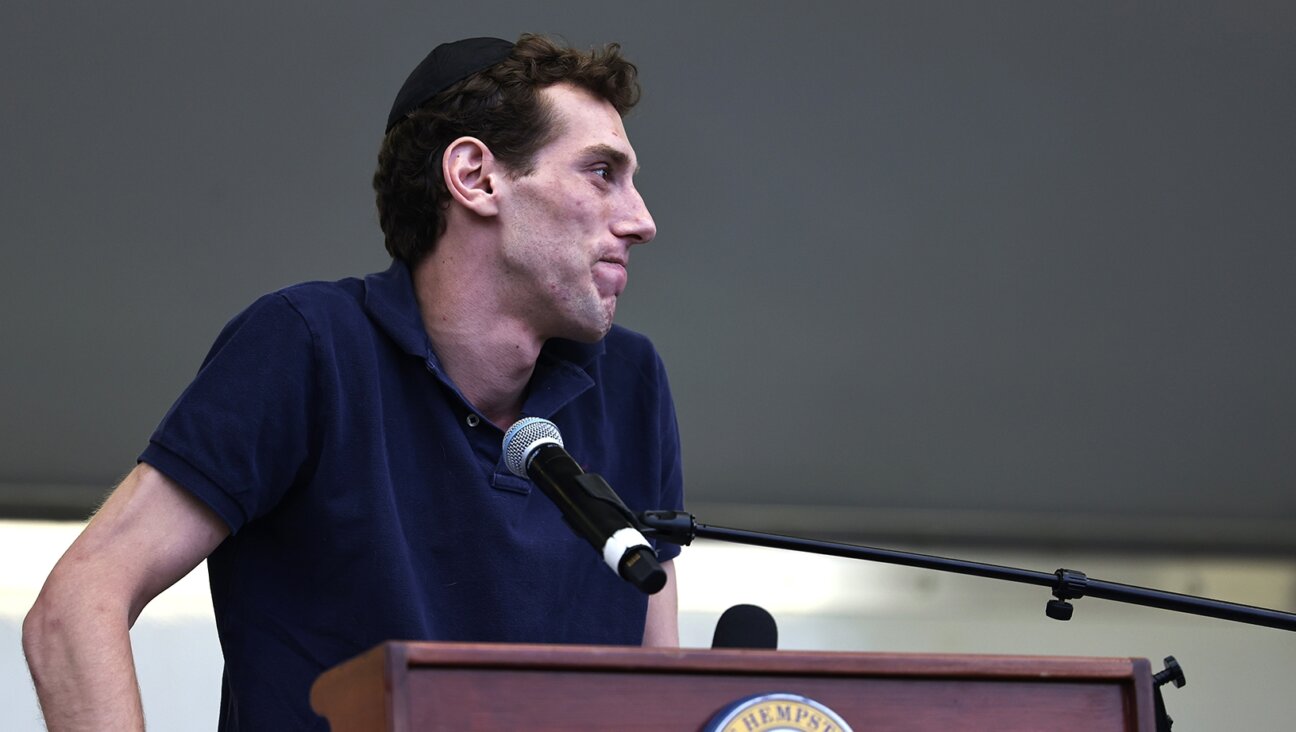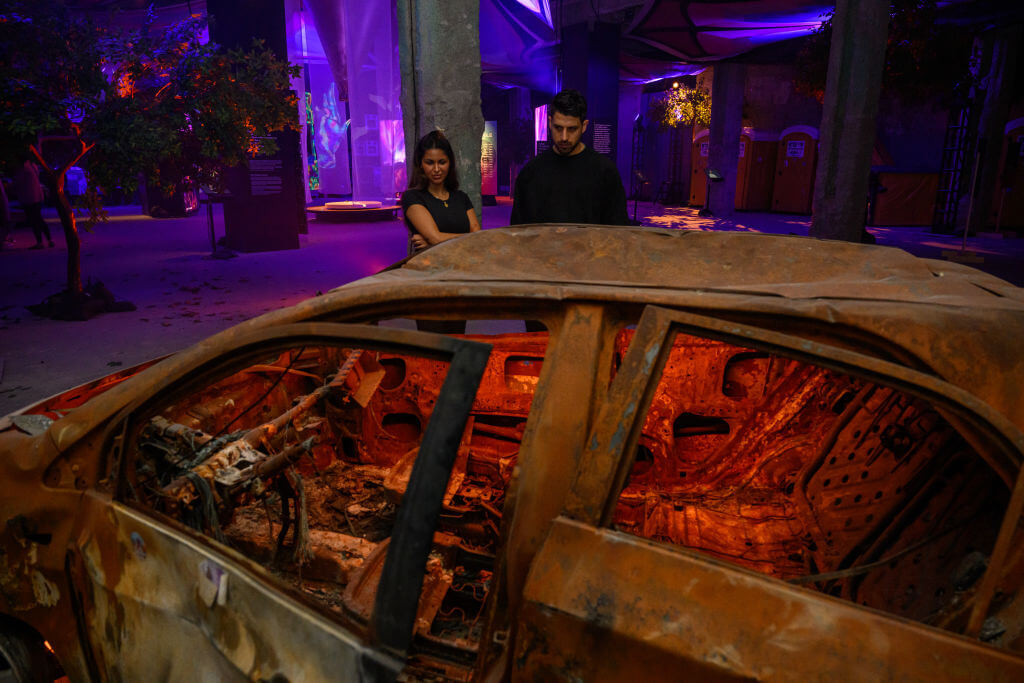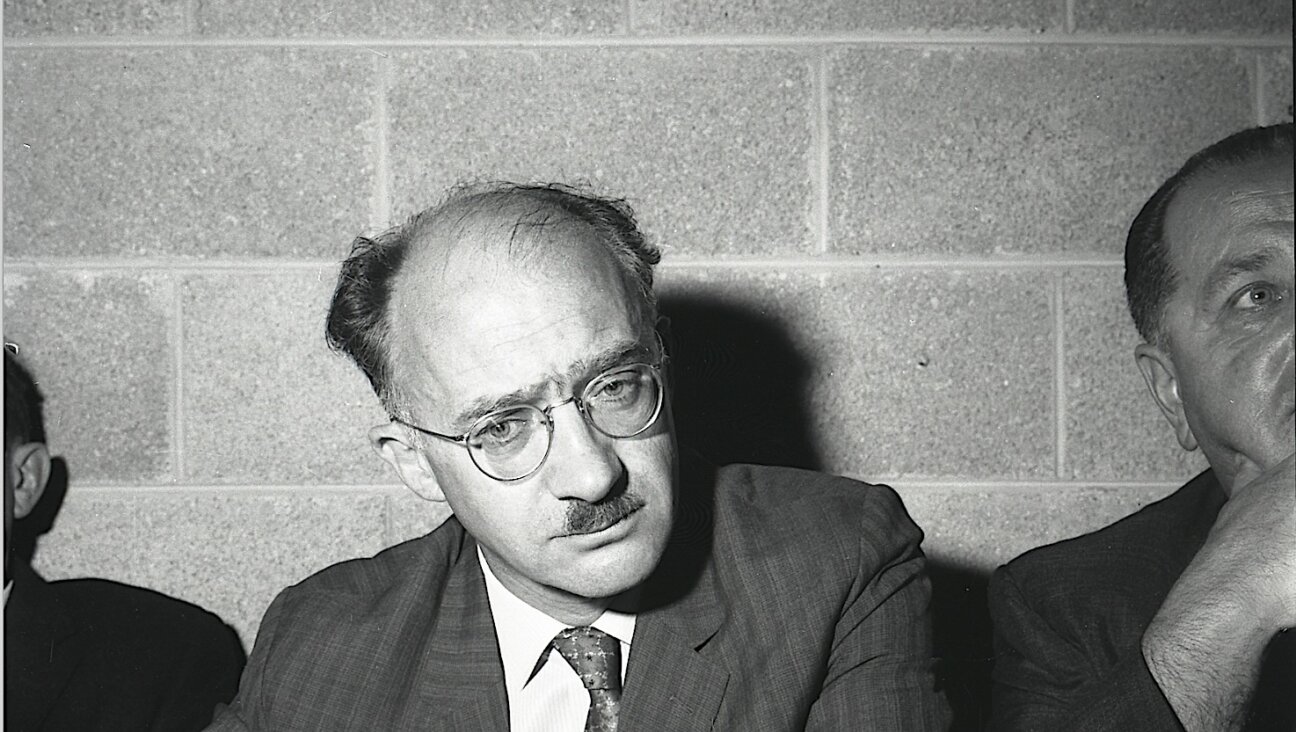Austria Confronts Kristallnacht — 80 Years Later

Graphic by Angelie Zaslavsky
2018 is Austria’s Gedenkjahr, 12 months of landmarks, anniversaries and commemorations that reach their zenith and nadir in November. The 11th and 12th of this month mark 100 years since the abdication of the last emperor, Charles I, and the declaration of the Republic of German-Austria. November 9 and 10, however, will be 80 years since the Novemberpogrom or Kristallnacht, when all but one of Vienna’s synagogues and houses of prayer were destroyed. Over two days of blazing destruction, 27 Jews were murdered, 88 severely injured, more than 6,500 arrested. Jewish-owned stores were smashed up and looted. The pogrom spurred the forced exodus of Jews from Austria, which had begun after the Anschluss in March 1938.
“Projekt OT,” a new initiative promoted by the Vienna Jewish Museum, will see Kristallnacht commemorated by a series of light installations at the sites of destroyed synagogues. A thin, cylindrical steel mast, a little over 16 feet in height, designed by local artist Lukas Maria Kaufmann, will support a 6-foot-wide LED-light sculpture made of acrylic glass. Viewed from the side, it appears deformed and shapeless, though seen from beneath, the illuminated tube forms a Star of David. Each installation comes affixed with a QR Code that, when scanned, links to a virtual reconstruction of the former synagogue. The project will, museum director Danielle Spera says, make passersby “aware of what has been lost forever.”
The lights are to be installed at 25 sites across 16 of Vienna’s districts, indicative of the wave of synagogue construction that took place in the 19th and early-20th century, as migration resulted in a Jewish population boom not only in historically Jewish neighborhoods like Leopoldstadt and Brigittenau, but also across the Austrian capital. Wedged into the existing cityscape, these new synagogues were architecturally ambitious, embracing iconoclastic styles from the Moorish Türkische Tempel, with its pointed arches, arcades and capitals copied from the Alhambra. to the neo-Gothic Neudeggertempel, whose designer, Max Fleischer, believed Jewish synagogues should more closely resemble Christian churches.
These plots of land where the destroyed synagogues once stood, having been stolen by the Nazis after Kristallnacht through a series of forced sales at insulting prices, were returned to IKG, the Jewish Community of Austria, following World War II. No synagogues were rebuilt, however, since forced deportation and mass murder had reduced Austria’s Jewish population to 10,000 in 1945 from 180,000 in 1938. Efforts were focused on restoring the one remaining synagogue on the centrally located Seitenstettengasse, which had been ransacked in 1938 but not leveled and is today the spiritual center of Jewish Vienna.
Instead, beginning in the 1950s, the IKG — then dominated by the Social Democratic League of Working Jews — sold the sites of former synagogues to the City of Vienna, under the control of the SPÖ, the Social Democratic Party. As the architectural historians Bob Martens and Herbert Peter note in their contributions to the 2016 collection “Viennese Synagogue: A Memory,” this process was criticized at the time by, among others, the Nazi hunter Simon Wiesenthal. He warned that the sites were being given away due to the close relationship between the BJW and SPÖ.

Past Meets Present: Vienna remembers Kristallnacht at 25 sites throughout the city. Image by Judisches Museum Wien
Some sites of destroyed synagogues continue to be used by Jewish institutions. The site of the magnificent romantic neoclassical Leopoldstädter Tempel (marked by its incorporation of design features said to have been used in Solomon’s Temple in Jerusalem) houses ESRA, which provides psychotherapeutic services to the Jewish community, especially Holocaust survivors and migrants. Four enormous white columns on the sidewalk, denoting the building’s former grandeur, memorialize the former synagogue.
But the main consequence of the IKG’s land sale policy is that Gemeindebauten, social housing built between the early 1950s and late 1980s and owned by the City of Vienna, mostly replaced the destroyed synagogues. On many but not all of these housing blocks, plaques have been erected that explain the site’s former designation. Written in a standard format, they note the synagogue’s architect as well as the dates of the building’s construction and destruction (though the signs have faded somewhat and are perfectly ignorable to someone casually walking down the street).
These explanatory panels constitute a kind of post facto commemoration: something stuck onto the new building at a later date, as opposed to a form of memorialization that was actively integrated into the design of the replacement structure at the time it was built. Examples of the latter are few and far between, though the site of the former Turnertempel in the city’s immigrant Rudolfsheim-Funfhaus district, where the local administration has built a memorial park, stands out in that sense.
The park is a rectification of an earlier error. In the 1950s the Turnertempel’s ruins were replaced by an auto repair shop and gas station, constructed using the bricks of the destroyed synagogue. Its owner sold the site to the city in 1973, and in 2011 the park was opened. Existing linden trees were woven into a design that used black concrete beams to denote the blown-apart roof truss of the synagogue, while mosaics recall the building’s destruction and the fate of the district’s Jewish residents. Among its qualities, the memorial is also wonderfully practical, an improvement to the urban landscape and an insertion of green recreational space into a neglected residential district.
What began with the burning of synagogues and shops, books and places of prayer and learning ended with the burning of bodies. The Holocaust was the attempted destruction of a civilization and also the total destruction of an idea. It concluded a hopeful yet failed chapter of European history, in which the dream of Jews and non-Jews living together as citizens and equal partners clashed with anti-Semitism. For Vienna, as is the case in other European metropolises, the legacy of Kristallnacht is that, outside of specific neighborhoods and enclaves, Jews are no longer a reality of daily life. Gone are not only the individuals and families, but also the physical reminders of that Jewish presence.
This is not to say that Vienna’s synagogues should have been reconstructed, only to stand empty week after week as mausoleums for a destroyed community. As the financial needs and demographic balance of the city’s Jewish community changed due to migration from Hungary, Poland and the former Soviet Union, what was required before 1945 was no longer necessary thereafter. Though Vienna’s new synagogues lack the architectural splendor of those built during the community’s golden age in the 19th century, the city is today home to them, catering to the Georgian and Bukharin subcommunities, liberal Judaism and Chabad-Lubavitch.
But certainly an opportunity was missed, due to the critical nature of Vienna’s postwar reconstruction (20% of its housing stock was destroyed during WWII) and to the lies Austria told itself for decades about its own status as victims as opposed to perpetrators, for an ongoing confrontation with its own history through more pronounced forms of memorialization.
If there is a hope for “Projekt OT,” it is that its obvious visibility, its height and luminescence, asserts and reinserts the historic Jewish presence into districts where the often magnificent infrastructure of Jewish life was, in one almighty conflagration, lost to the city for all time.
Liam Hoare is a freelance writer based in Vienna.
















